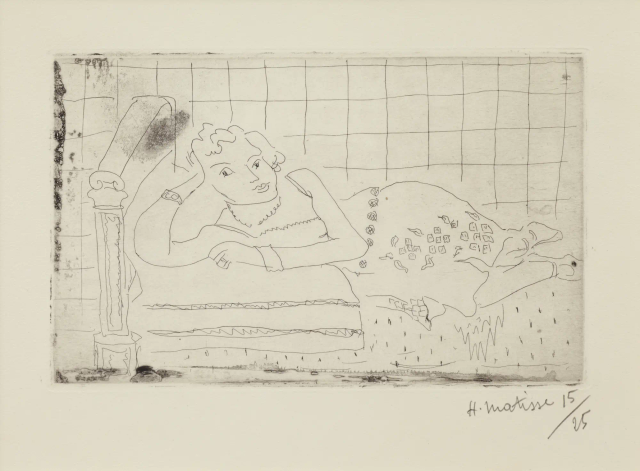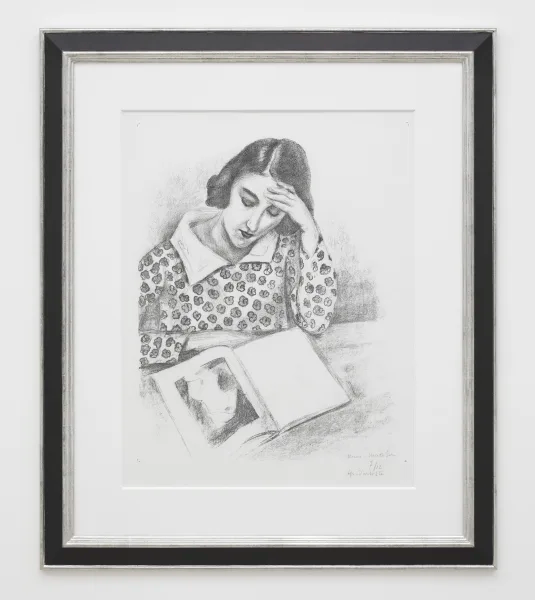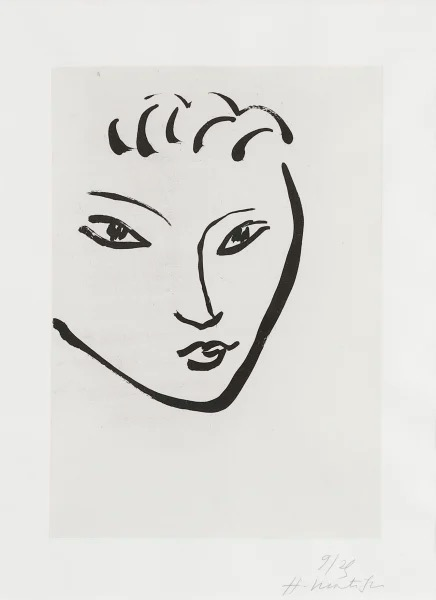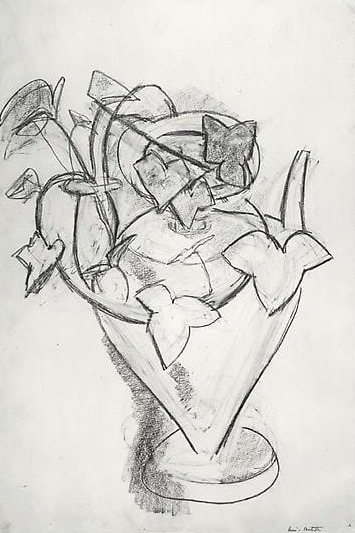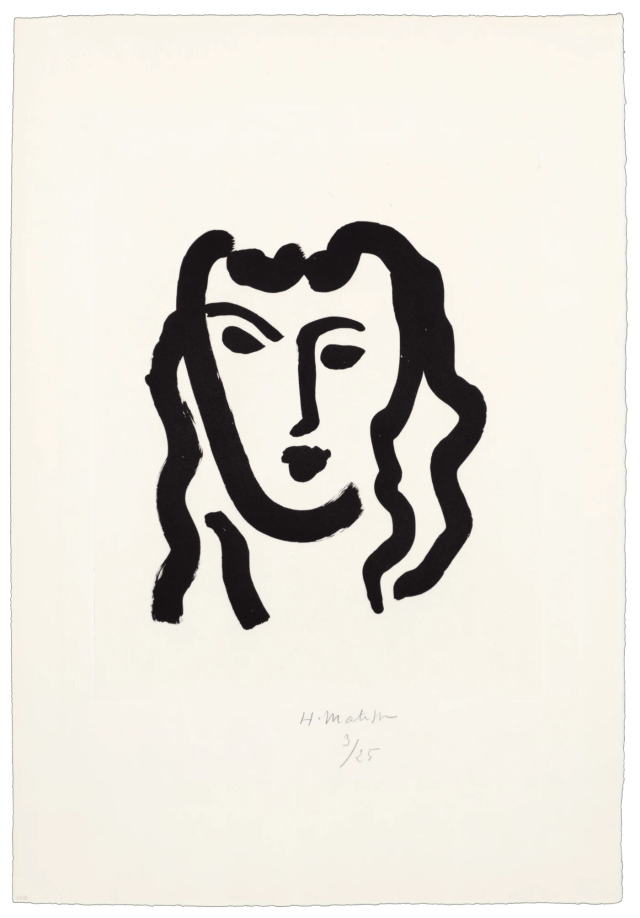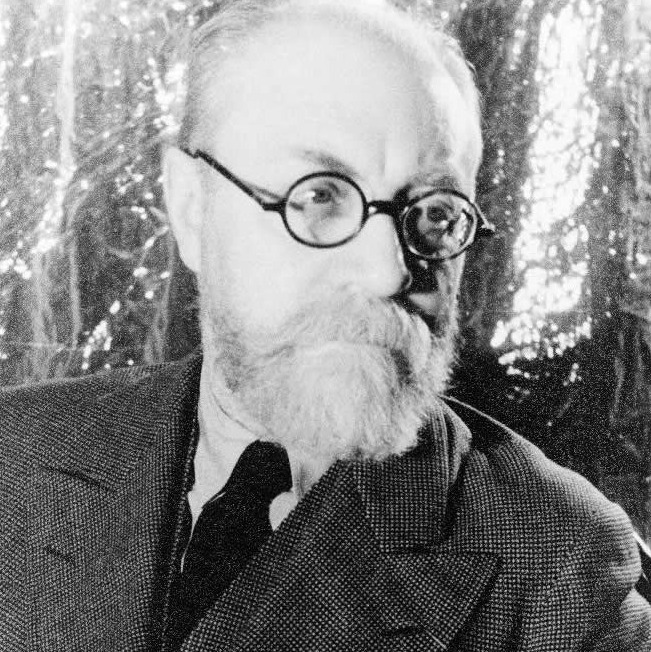
Henri Matisse
Henri Matisse, a French painter and printmaker, was a highly influential artist in the twentieth century. His innovative style significantly reshaped modern art and profoundly impacted successive generations of painters.
Biography of Henri Matisse
Henri-Émile-Benoît Matisse was born in 1869 in the small industrial town of Bohain-en-Vermandois, France. Although most of his family members worked for a local grain company, Matisse diverged from this path, expressing a keen interest in studying law. After securing a job as a legal clerk, he moved to Paris to pursue studies at the law university. Upon completing his degree in 1889, Matisse found employment at a law firm in Saint-Quentin. Interestingly, he showed no significant signs of artistic inclination before his time in Saint-Quentin.
To infuse vibrancy into his monotonous days at a law firm that failed to meet his expectations, Matisse decided to enroll in drawing classes. At the age of 21, after just a few months, he received a sudden diagnosis of an illness that kept him bedridden for a while. During this period, Matisse dedicated himself to painting. Surprisingly, he discovered greater happiness in creating art during his illness than in his healthy work routine. Consequently, he made the courageous decision to resign from his job and set his sights on Paris, where he aspired to further his artistic education. Fortunate in his financial circumstances, he had the means to study at prestigious institutions such as the Académie Julian and the École des Beaux-Arts.
His academic training adhered to established principles, and the artist was content with that until the day he encountered the recent Post-Impressionist creations of artists like Paul Cézanne and Vincent van Gogh. This had a profound impact on the young Matisse, who remained torn between the path of modern and traditional painting. While Cézanne and van Gogh didn't entirely win over Matisse, Georges Seurat, and Paul Signac found greater resonance with him.
In the mid-1890s, he began exhibiting his works in major group exhibitions, even daring to participate in a show at the formidable Salon. Matisse's art garnered favorable attention and earned positive reviews from critics. Shortly thereafter, he wed Amélie Parayre, with whom he would raise three children.
As the 20th century dawned, the artist embraced Pointillism, a painting technique involving the use of small dots of color instead of traditional brushstrokes. He severed his association with the Salon and shifted his focus to the more progressive Salon des Indépendants. In 1904, he held his first solo exhibition at the gallery of the art dealer Ambroise Vollard.
In the pivotal years of 1904 and 1905, Matisse underwent a remarkable creative transformation. His color palette shifted significantly towards vividness during this period, influenced by his travels to Saint-Tropez in southern France and the Mediterranean commune of Collioure. In Collioure, he painted two significant works, "Open Window" and "Woman with a Hat," both exhibited at the 1905 Salon d’Automne.
In 1917, the artist initiated a routine of spending his winters in the balmy Mediterranean, and by 1921, he had permanently relocated to Nice. From 1918 to 1930, Matisse primarily focused on painting female nudes in meticulously arranged settings while also dedicating considerable time to printmaking and book illustration. He secured several commissions, including the creation of a mural titled "Dance II" for the collector Dr. Albert Barnes in 1931.
In 1941, Matisse underwent surgery, and post-surgery, he spent much of his time bedridden. It was a return to a full circle, as his artistic journey had initially commenced in the seclusion of his own bed. Despite his health challenges, he continued to explore painting, writing, and illustrating his books, decorating interiors, and crafting images from colored paper cutouts until the end of his life.
Henri Matisse's Art Style
Henri Matisse accentuates the emotive power of sinuous lines, bold brushwork, and vibrant, almost acidic colors in his masterpiece, "The Joy of Life." Much of the artist's mature work, like this painting, aimed to convey a particular mood rather than replicate the world as it appears. Establishing his distinct artistic style, Matisse achieved considerable success, enabling him to embark on extensive travels to Italy, Germany, Spain, and North Africa—customary sources of his inspiration.
In 1909, Matisse created a significant pair of paintings, "Dance I" and "Music," which continued to captivate audiences with their hallmark features: vibrant, saturated colors, flattened pictorial space, limited detail, and bold outlines. These elements came to define Matisse's artistic style.
While some of his works from this period displayed Cubist influences, such as "The Piano Lesson" from 1916, this was a relatively minor aspect. This likely stemmed from Matisse's enduring rivalry with Pablo Picasso. Despite their shared success and wealth as artists, Matisse and Picasso held opposing ideas about color and form. The artist's rivalry with Pablo Picasso and Cubism played a pivotal role in the birth of a new art movement in history known as Fauvism.
Years:
Born in 1869
Country:
France, Bohain-en-Vermandois
Gallery:
Galerie Thomas
Cristea Roberts Gallery
Luxembourg + Co.
ACQUAVELLA
Landau Fine Art
Helly Nahmad Gallery
Bernard Jacobson Gallery
Gagosian
